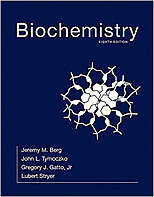
Biochemistry
Berg, Jeremy M.; Tymoczko, John L.; Gatto, Jr., Gregory J.; Stryer, Lubert
8 ed.
New York: W.H. Freeman and Company, 2015
 |
Biochemistry Berg, Jeremy M.; Tymoczko, John L.; Gatto, Jr., Gregory J.; Stryer, Lubert 8 ed. New York: W.H. Freeman and Company, 2015 |
44 termes
| Raf n. |
|
| Ramachandran plot n. |
|
| random sequential reaction n. |
|
| rate enhancement n. |
|
| RBP4 n. |
|
| reactive intermediate n. |
|
| reactive site n. |
|
| RecA n. |
|
| RecA protein n. |
|
| Reclinomonas americana [nom científic] |
|
| recombinant DNA molecule n. |
|
| recombination synapse n. |
|
| reductive biosynthesis n. |
|
| reflection n. |
|
| regulatory light chain n. |
|
| regulatory protein PII n. |
|
| repeated motif n. |
|
| reporter gene n. |
|
| respirasome n. |
|
| respiratory quotient n. (RQ) |
|
| retinal-lysine linkage n. |
|
| reversible inhibition n. |
|
| reversible terminator method n. |
|
| RFC n. (replication factor C) |
|
| Rhizobium bacteria n. |
|
| rho n. |
|
| Rhodopseudomonas viridis [nom científic] |
|
| Rhodospirillum rubrum [nom científic] |
|
| ribosomal initiator element n. (rInr) |
|
| ribosome release factor n. (RRF) |
|
| riboswitch n. |
|
| ribulose 1,5-biphosphate n. |
|
| Rickettsia prowazekii [nom científic] |
|
| right-handed supercoiling n. |
|
| rInr n. (ribosomal initiator element) |
|
| RISC n. (RNA-induced silencing complex) |
|
| ritonavir n. |
|
| RNA primer n. |
|
| RNA sequence n. |
|
| RNA-DNA hybrid n. |
|
| RNA-induced silencing complex n. (RISC) |
|
| RNase III n. (ribonuclease III) |
|
| RQ n. (respiratory quotient) |
|
| RRF n. (ribosome release factor) |
|